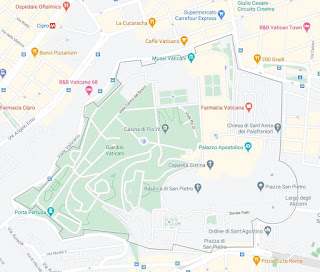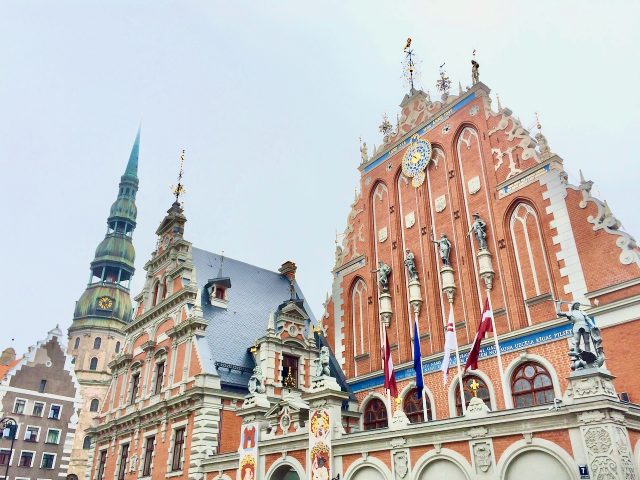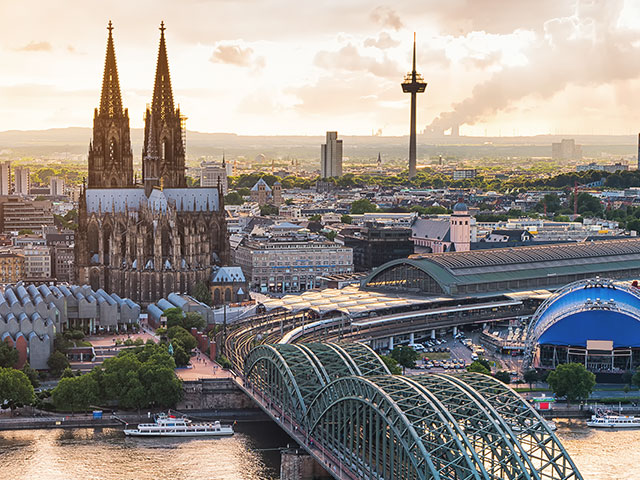 Vatican City (Stato della Città del Vaticano in Italian, Status Civitatis Vaticanae in Latin) is a 1,000 people country in the southern part of
Europe, inside Italy, the smallest country in the world. The
population is all Catholic, the official languages are Italian and Latin. The official
currency is the euro (€) even though the country doesn't belong to the European Union (EU). The capital and largest city is Vatican City. This country is unique in the world because it's an ecclesiastical state, the leader of the country is the Pope of the Roman Catholicism religion.
Vatican City (Stato della Città del Vaticano in Italian, Status Civitatis Vaticanae in Latin) is a 1,000 people country in the southern part of
Europe, inside Italy, the smallest country in the world. The
population is all Catholic, the official languages are Italian and Latin. The official
currency is the euro (€) even though the country doesn't belong to the European Union (EU). The capital and largest city is Vatican City. This country is unique in the world because it's an ecclesiastical state, the leader of the country is the Pope of the Roman Catholicism religion.How do I arrive to Vatican City?
- Bus: one of the buses which goes to Vatican City is the 81, which also stops at Spanish Steps, Trevi Fountain and Colosseum.
- Metro: the nearest stop of Rome Metro is Ottaviano-San Pietro (line A-line C).
- Car: if you rented a car, the best choice in a big city like Rome is leave the car in the garage and go walking or using public transport.
History
What can I visit in Vatican City?
- St. Peter's Basilica (7-19 in summer; 7-18:30 in winter): world biggest Catholic church, first built in the 4th century and then rebuilt in the 16th century. It was mainly designed by Michelangelo and has one of his most recognised sculptures, Pietà. The façade was designed by Carlo Maderno and from its Logia della Benedizione the Pope gives Urbi et Orbi blessing. In its inner part has among its highlights the places where emperors were crowned, St. Peter's sculpture by Arnolfo di Cambio and St Peter's baldaquin by Bernini.
- Cupola (9-18 from Apr to Sep; 8-17 from Oct to Mar; 10€/ 8€ lift+walking/ walking): cupola designed by Michelangelo Buonarroti, who changed Michelangelo original design. Despite having to walk 551 steps (320 paying the lift) it provides an awesome view of Rome.
- St. Peter's Grottoes (9-18 from Apr to Sep; 8-17 from Oct to Mar; free): place where many Popes were buried which also has some original columns of the Old St. Peter's Basilica.
- Art History Museum (7-18:15 in summer; 7-17:15 in winter; 10€/ 8€ adults/ reduced): museum which hosts the National Treasury, with many important works of art like the Crux Vaticana, given to Rome by the East Roman Emperor Justin II, in the 6th century.
- St. Peter's Necropolis (9-18 Mon-Fri; 9-17 Sat; 13€; it has to be booked in advance): excavations under the basilica have shown the rests of the old basilica that was located here before the current one and what is said to be St. Peter's grave.
- Piazza San Pietro: square built in the 17th century following a Bernini design. In the middle has an obelisk brought from Egypt by Caligula. When the Pope is in Rome, he delivers an speech on Wednesdays at 11 and blesses the people in Piazza San Pietro on Sunday's noon.
- Vatican Museums (9-18 Mon-Sat; 9-15 last Sun of the month; 17€/ 8€ adults/ reduced): complex of museums that show the amount of wealth that popes have traditionally had, investing it on works of art. It is higly recommened renting an audio guide or having about this museum.
- Paintings Gallery: gallery with some nice paintings like Transfiguration by Raphael, Saint Jerome by Leonardo da Vinci or others by painters like Fra Angelico, Titian or Caravaggio. It is usually ignored by tourists.
- Collection of Modern Religious Art: gallery created by Pope Paul VI with paintings by Kandisky, Picasso, Vicent van Gogh or Salvador Dalí.
- Chiaramonti Museum and Braccio Nuovo: this part of the Vatican Museums has statues of gods, Roman patricians and the famous statue of Nile.
- Pius and Clementine's Museum: museum with the best sculptures in the Vatican Museum, like the sarcophagi of Helena and Constantina (4th century), Sleeping Ariadne (2th century BC) or the Belvedere Torso (15th century).
- Etruscan Gregorian Museum: museum founded in the 19th century by the Pope Gregory XVI which has important Etruscan pieces like the Mars of Todi or the Guglielmi Collection.
- Egyptian Gregorian Museum: museum founded in the 19th century by the Pope Gregory XVI which has important Egyptian pieces like papyruses, Ramesses II's throne or the Grassi Collection.
- Raphael Rooms: four rooms with frescoes painted by Raphael and his disciples for Pope Julius II. Their names are Stanza della Segnatura, Stanza d'Eliodoro, Sala di Constantino and Stanza dell'Incendio del Borgo. They have the very famous painting The School of Athens.
- Sistine Chapel: chapel with has one of the more known frescoes in the world, ordered by Pope Sixtus IV. The main works of art are The Last Judgment and The Creation of Adam, both by Michelangelo. Here is the place a conclave about a new Pope takes place.
- Apostolic Palace: 15th century palace built as Pope's residence, first built in the 4th century. It is compunded of some of the places previously mentioned (like Sistine Chapel or Raphael Rooms)and some places that aren't usually opened, like Pope Portraits Room, Urban VIII Chapel or Music Room. There are tours to visit those rooms that are usually closed to tourists that have to be booked on advance.
What can I buy in Vatican City?
In Vatican City can be found many souvenirs, specially religious ones, like rosaries.








 16:58
16:58
 Banknotemaniac
Banknotemaniac


 Posted in:
Posted in: 

